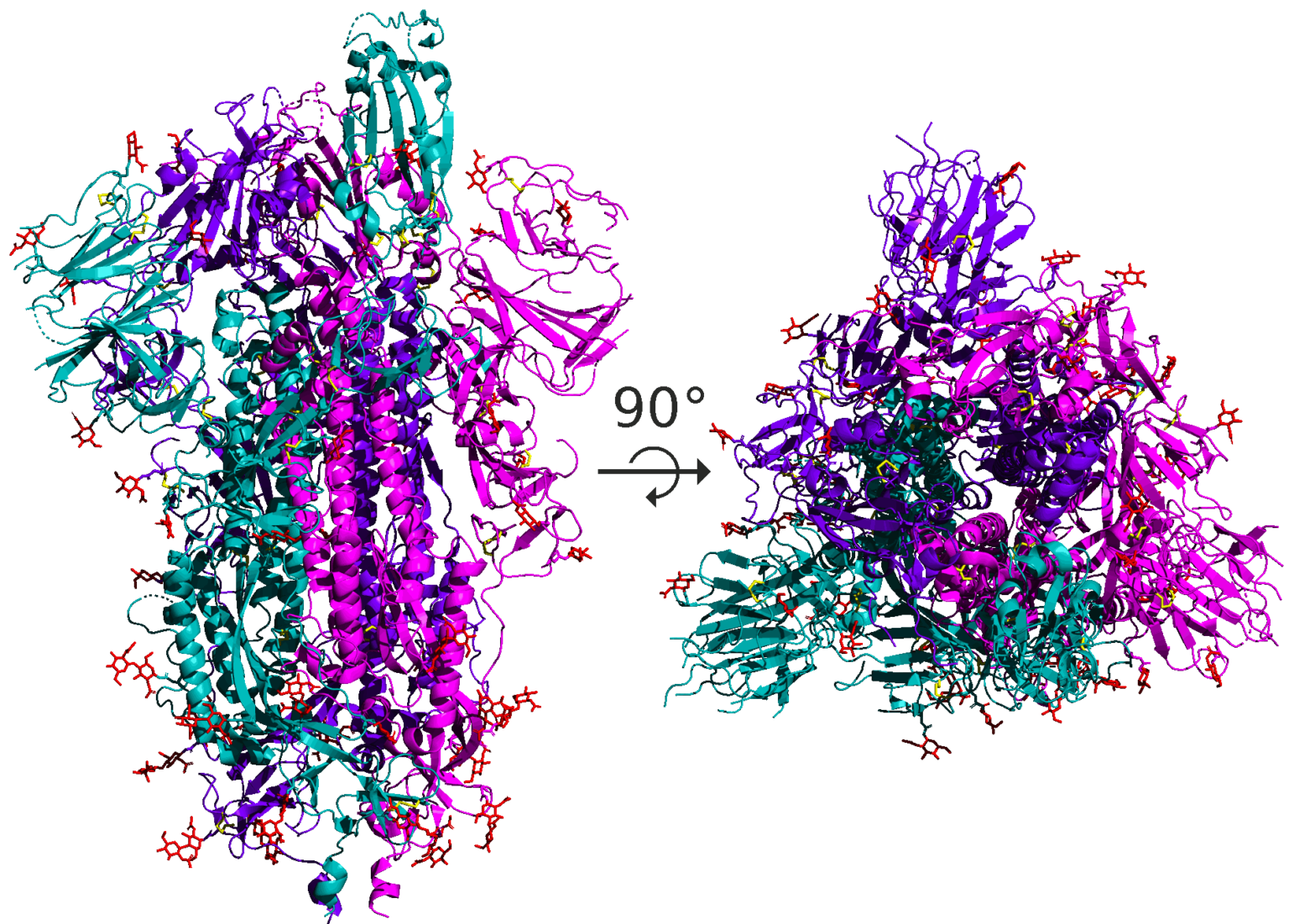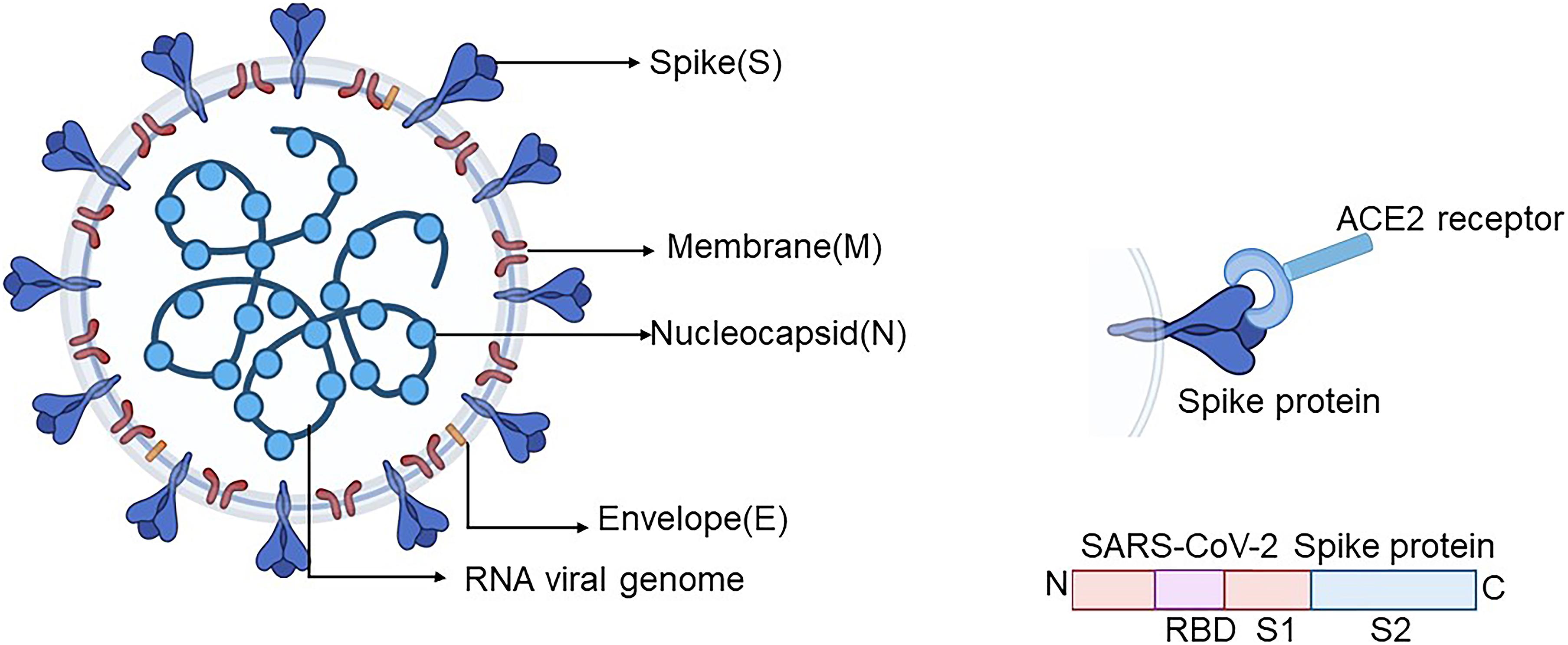

In a preprint paper uploaded to medRxiv in June, researchers reported detecting a fragment of SARS-CoV-2 in blood samples from long COVID sufferers up to a year after their original infection.

Now researchers may have found a marker for the disabling condition: a piece of SARS-CoV-2, the virus that causes COVID, floating around in the blood of some long COVID sufferers well after their initial infection. Part of the difficulty is that there isn’t yet a way to measure biological signals of long COVID infections in the body to start the process of testing new treatments.
Viral spike protein how to#
Doctors can diagnose long COVID by speaking to their patients about their experiences before and after an initial COVID infection, but researchers still haven’t pinned down what causes the condition or how to treat it.

The cell breaks down and gets rid of the mRNA soon after it's finished using the instructions.The now infamous condition long COVID presents as a wide range of symptoms-everything from persistent chest pains to rashes, pins and needles, and brain fog. mRNA vaccines do their work outside of the nucleus (in a space called the cytoplasm) and have not been observed to interact with the nucleus. COVID-19 vaccines cannot change your DNA.ĭNA is stored in the nucleus of your cells. Can the COVID-19 vaccines change your DNA? A much smaller amount of mRNA vaccine went to farther away lymph nodes. A lot of mRNA vaccine was found in local lymph nodes, which peaked about eight hours after the shot was given. Most of the mRNA vaccine stayed in the injection site muscle – where you get the shot. That means the vaccine did its job (made spike proteins, which caused the creation of antibodies) and will be cleared from the body.Īnother peer-reviewed study tested exactly where an mRNA vaccine went in mice. Finding pieces of spike protein in the lymph nodes is completely normal, because lymph nodes act as the trash removal service for the body. A key part of the lymphatic system, lymph nodes also clean up fluids and remove waste materials. This makes sense: Lymph nodes produce white blood cells and antibodies to protect us from disease. Vaccines mostly remain near the site of injection (the arm muscle) and local lymph nodes. Here's a peer-reviewed study that shows where intramuscular vaccines (which all three of the COVID-19 vaccines are) travel in macaques (a type of monkey). The Novavax vaccine introduces the actual protein into your body to produce an immune response similar to many other vaccines currently in use. It remembers what it saw and when you are exposed to coronavirus in the future it can rapidly mount an effective immune response. This "learning the enemy" process is how the immune system figures out how to defeat the real coronavirus. The immune system quickly identifies, attacks and destroys the spike proteins because it recognizes them as not part of you. The Infectious Disease Society of America (IDSA) estimates that the spike proteins that were generated by COVID-19 vaccines last up to a few weeks, like other proteins made by the body. How long do spike proteins last in the body? mRNA is very fragile that's one reason why mRNA vaccines must be so carefully preserved at very low temperatures. The cell breaks the mRNA up into small harmless pieces. The cells make copies of the spike protein and the mRNA is quickly degraded (within a few days). The Pfizer and Moderna vaccines work by introducing mRNA (messenger RNA) into your muscle cells. So antibodies created against the spike protein won't harm your body, they will only target coronavirus. The spike protein is unique to SARS-CoV-2 – it doesn't look like other proteins your body makes. Its location on the outside of the virus makes it so the immune system can recognize it easily. The spike protein is located on the outside of a coronavirus and is how SARS-CoV-2 (the coronavirus) enters human cells. Why do they use spike proteins?įor COVID-19 vaccines, all of the approved vaccines so far used the spike protein. There is no evidence that any mRNA or protein accumulates in any organ. Here we break down the data to show where mRNA vaccines (and spike proteins) travel in the body. Some have expressed concern that the spike protein or other parts of the mRNA vaccines build up in the body, particularly in the ovaries or the brain. When it encounters the virus or bacteria in the real world it mounts a strong immune response preventing or decreasing the severity of infection. While the piece introduced by the vaccine rapidly fades away, your body's immune system remembers what it saw. Vaccines generally work by introducing a piece of a virus or bacteria into your body so you can develop long-lasting immunity to the pathogen.


 0 kommentar(er)
0 kommentar(er)
